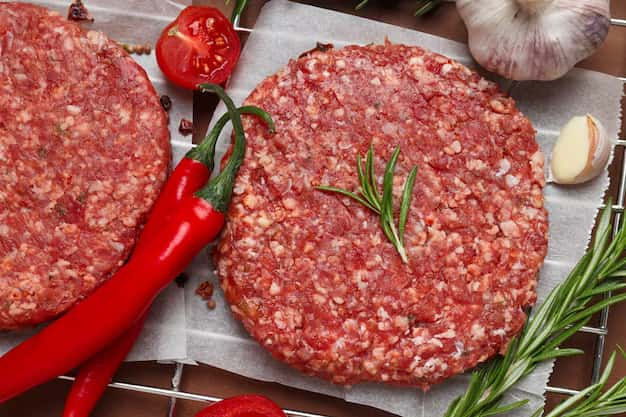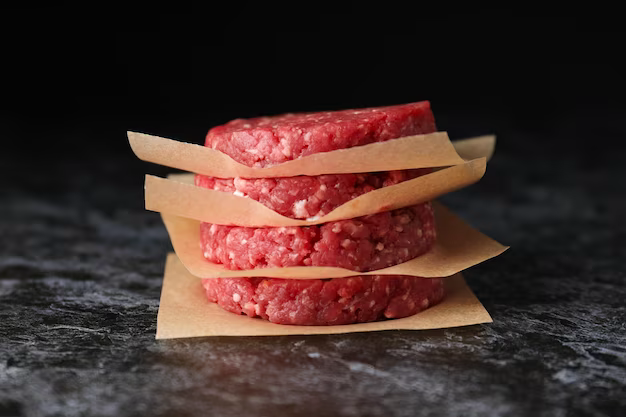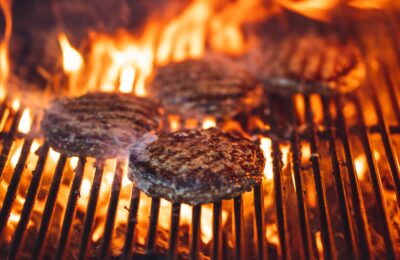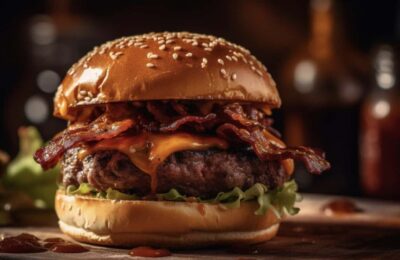Hamburgers, a cherished staple of American cuisine, are relished by millions of people every day. The seemingly simple hamburger offers an array of flavors and textures that delight the palate. However, the key to an exceptional burger lies primarily within its core ingredient – the meat. The choice of meat significantly influences the taste, texture, and overall quality of the hamburger.
The quintessential choice for mouthwatering and juicy hamburgers is undoubtedly the 80/20 ground chuck. Comprising 80% lean meat and 20% fat content, this meat selection guarantees an explosion of flavors and a moist, juicy texture, resulting in an unforgettable burger experience.
In this article, we delve into the wide variety of meats suitable for hamburgers, examine what factors play a pivotal role in determining the optimal meat selection, and offer valuable tips on how to prepare and cook the ideal burger. Whether you are a seasoned griller or a stovetop cooking enthusiast, this guide will serve as your one-stop resource.
Embark on this journey with us as we unlock the secrets to choosing the best meat for your burgers. Whether you are a seasoned burger connoisseur or a culinary newbie, this comprehensive guide will empower you to make an informed decision for your next culinary masterpiece.
Deep Dive into Burger Meats: Choosing the Right Cut
To craft a burger that will tantalize your taste buds, it’s essential to understand the different types of meat available. Here’s a rundown on some of the most commonly used meats for burgers:
- Ground Chuck: An ideal choice for its perfect balance of lean meat and fat, making your burgers juicy and flavorful;
- Ground Sirloin: Leans towards the leaner side, making it a healthier option but may compromise on the juiciness of the burger;
- Ground Round: It’s leaner than chuck and sirloin but can create delicious, low-fat burgers;
- Ground Turkey or Chicken: A non-beef option for those seeking lighter, leaner alternatives.
Grilling and Cooking Tips for Perfect Burgers
- The Patty Formation: Avoid overworking the meat while forming patties to prevent tough burgers. Keep them loose but intact;
- Seasoning: Season the burgers generously. Salt, pepper, and your favorite herbs can enhance the meat’s natural flavors;
- Cooking Time: Overcooking can lead to dry, unappetizing burgers. Aim for a medium-rare to medium finish, depending on your preference.
Unraveling the World of Burger Meats: A Selection Guide
To create a delightful hamburger, it’s essential to be familiar with the different meats available in the market. Below is an overview of some popular choices:
- Ground Chuck: Also known as ground beef, ground chuck is the top pick for hamburgers due to its availability, affordability, and versatility in terms of fat content. The recommended ratio is 80/20, although if you prefer less fat, opt for 85/15 or 90/10. However, remember that the fat content directly impacts the juiciness and flavor of your burger. Ground beef can still deliver tasty burgers even when frozen, providing an edge over other frozen meats;
- Bison: Leaner than beef, bison lends a unique sweet and rich taste to your burger. Bison burgers are protein-rich, low-fat, and a healthier alternative to beef. Do keep in mind that bison is pricier than beef and might be harder to locate;
- Pork: Often overlooked, pork is a flavorful and juicy choice for your burgers. Ground pork comes from various cuts like shoulder or loin, each offering different attributes. Pork burgers are an excellent alternative for those seeking a shift from traditional beef burgers. However, the fat content is significantly higher in comparison to beef;
- Lamb: With a distinct taste, lamb burgers are well-liked in Mediterranean and Middle Eastern cuisines. Lamb is leaner than beef and offers a gamey flavor, complimenting robust spices and herbs wonderfully. It’s an excellent option for individuals allergic or sensitive to beef;
- Turkey: A leaner and healthier alternative to beef, ground turkey is subtly flavored. It blends well with seasonings, making it a great choice for a high-protein, low-fat burger;
- Plant-Based options: Thanks to the rise in health consciousness and sustainability, vegetarian and vegan burgers are in vogue. Made from beans, mushrooms, and soy protein, they are perfect for those seeking a meat-free burger.

Mastering the Art of Burger Preparation and Cooking
Managing and Seasoning: The Foundation of a Good Burger
When it comes to preparing hamburgers, the initial handling of the meat plays a surprisingly important role. Over-manipulation of the meat may lead to tougher, less juicy burgers. Hence, it’s advised to handle the meat with care, ensuring it remains airy for a juicy and tender result.
Seasoning is another crucial step in the process. Using ample amounts of salt and pepper or other chosen spices will amplify the flavor of your selected meat. A well-seasoned patty can make a world of difference in the overall taste of your burger.
Grilling Versus Stovetop: Comparing the Cooking Methodologies
While the traditional grilling method, ideally over an open flame, imparts a smoky, charred flavor to the burgers, stovetop cooking also has its own merits. The latter offers easy temperature control and precision in cooking times, making it a valuable technique for those who prefer more control over the entire cooking process.
Getting the Cooking Temperature and Time Just Right
The right cooking temperature and timing are paramount for crafting perfect and safe-to-consume hamburgers. Ground meat, such as beef, pork, lamb, or bison, should reach an internal temperature of 160°F (71°C), while turkey burgers should be cooked to hit an internal temperature of 165°F (74°C). Generally, cooking for 3-4 minutes on each side at high heat should suffice, although this may vary depending on the thickness of the burger and the cooking method used.
Let it Rest, Then Serve: The Finishing Touches
After the burgers are cooked, allow them to rest for approximately five minutes before serving. This resting period enables the juices to redistribute, enhancing the overall juiciness of the burger. Present your culinary masterpiece on a toasted bun, adorned with your favorite toppings and sauces.
Burgers with Direct or Indirect Heat: Mastering the Flame
In the realm of burger creation, the method of heat application – direct or indirect – plays a pivotal role in defining the texture and flavor of the final product. Direct heat, where the burgers are grilled directly over the flame, imparts a charred and smoky essence, ideal for creating a crusty exterior while retaining a juicy interior. This technique is best suited for meats like ground chuck or pork, where the fat content aids in forming a delightful sear.
Indirect heat, on the other hand, involves cooking the burgers away from the direct flame, allowing them to cook evenly and slowly. This method is particularly beneficial for leaner meats such as ground turkey or chicken, reducing the risk of drying out the meat. Indirect grilling also provides the advantage of minimizing flare-ups, ensuring a consistent cooking process.
Incorporating these heat techniques into your burger preparation can significantly enhance the culinary experience, allowing you to tailor the cooking process to the specific type of meat chosen. Whether opting for a traditional beef patty or a leaner poultry option, understanding and applying these grilling methods can elevate your burger to gourmet standards.
Conclusion
Constructing an exceptional hamburger is an art, a science, and a voyage of culinary discovery. Every choice, from selecting the meat to perfecting the cooking technique, influences the burger’s final taste and texture. This comprehensive guide caters as your roadmap through this journey, equipping you with the knowledge to make informed choices and craft burgers that are not just delicious, but also tailored to your dietary preferences and health considerations. Happy grilling!


